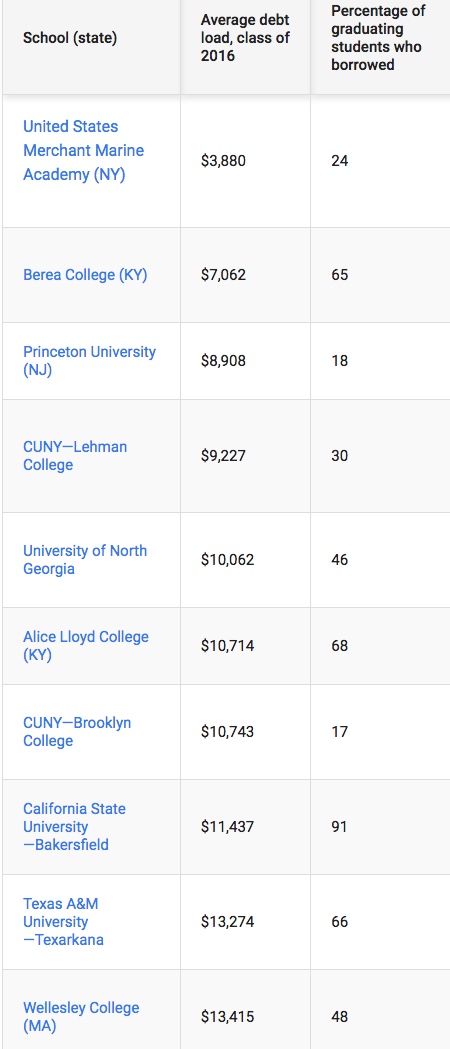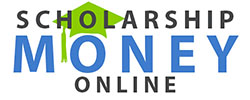U.S. News & World Report recently published its list, “10 Colleges Where Graduates Have the Least Debt.” Essentially, the publication has sliced and diced its rankings data to produce this “top 10” list. At Scholarship Money Online, we’re vociferous advocates of a debt-free education. Generally speaking, if you have to go into student loan debt, it’s time to look for an alternative. Having said that, there are certainly times when a loan or two might be inevitable. But a straight ranking of the debt load of a graduating class can be misleading. Let’s take a look:

Now, it’s time for a deeper dive to see what the numbers can tell us.
Starting from the top of the list, the U.S. Merchant Marine Academy inclusion isn’t a surprise, given that its cost of attendance is $8,427 per year. That figure includes health insurance, transportation, and supplies. Tuition, room, and board are free. In other words, the average debt of $3,880 is about 10 percent of the total cost of attendance (COA) over four years. That would be the equivalent of a University of Michigan graduate having $12,200 in debt. Not too bad.
Kentucky’s Berea College offers a Tuition Promise Scholarship to cover 100 percent of tuition costs. It makes sense, then, that the average student debt would be low. What’s more surprising is that 65 percent of graduating students had to take on student loan debt in order to attend. That’s a red flag, and it would be interesting to know what lies behind that number.
Princeton, which is next on the list, should fit right in, as the school meets 100 percent of calculated financial need. The low percentage of graduates with student loans – 18 percent – reinforces that Princeton walks its talk. It actually begs the question, why didn’t other schools – like Harvard and Stanford – that also meet 100 percent of need make the cut?
The full-time tuition for the two CUNY campuses – Lehman College and Brooklyn College – is about $6,530. That figure doesn’t include room and board, books, supplies, fees, or other expenses. As a result, the average debt is relatively low. Especially heartening is CUNY-Brooklyn having only 17 percent of graduates who took out loans.
For the University of North Georgia, that number climbs to 46 percent. With a cost of attendance of $22,596, the debt load represents about 10.5 percent of the total cost of attendance over four years. Kentucky’s private Alice Lloyd College, which is next on the list, offers Appalachian students up to full tuition for 10 semesters. This need-based aid doesn’t cover room and board, books and fees, and personal expenses, so fully 68 percent of graduates take out loans to make up the difference.
Nine out of ten CSU Bakersfield students take out student loans, even if the total debt load hovers around $11,000. Texas A&M-Texarkana’s cost of attendance is roughly $20,000 per year, so the average debt of a graduating student represents about 13 percent of the total COA.
The elite Wellesley College draws students from families with a median income of $141,000, and 59 percent of its students come from families that are among the top 20 percent of earners. Still, 48 percent of its graduates have student loan debt, though with an annual cost of attendance of $67,000, the debt load represents only about five percent of the COA over four years.
While the U.S. News & World Report data is interesting, it doesn’t begin to tell the whole story. A ranking that factors in the percentage of students forced to take loans and the loan amount as a percentage of COA would likely result in a much different list – one that would compare apples to apples.
Want more info and tips about how to avoid student loan debt? Subscribe to the Scholarship Money Online newsletter.


Leave A Comment